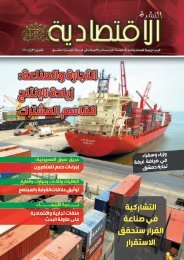SIGAR
2017-01-30qr
2017-01-30qr
You also want an ePaper? Increase the reach of your titles
YUMPU automatically turns print PDFs into web optimized ePapers that Google loves.
<strong>SIGAR</strong> OVERSIGHT ACTIVITIES<br />
the United States has committed more than $8.5 billion to<br />
counternarcotics efforts in Afghanistan, the country still leads the<br />
world in opium production, and Afghan farmers are growing more<br />
opium than ever. The Afghan insurgency receives significant funding<br />
from participating in and taxing the illicit narcotics trade, raising the<br />
question of whether the Afghan government can ever prevail without<br />
tackling the narcotics problem.<br />
• Contract Management<br />
The scope of contracting in support of U.S. objectives in Afghanistan<br />
is enormous, but contracting represents a high risk to the success<br />
of Afghanistan reconstruction. The usual difficulties of contract<br />
management are magnified and aggravated by Afghanistan’s<br />
remoteness, active insurgency, widespread corruption, limited<br />
ministerial capability, difficulties in collecting and verifying data, and<br />
other issues.<br />
• Oversight<br />
The ability for trained professionals to conduct site visits is a critical<br />
part of effective reconstruction oversight. Unfortunately, accessing<br />
reconstruction project sites and programs in Afghanistan has grown<br />
increasingly difficult with the U.S. and Coalition military drawdown.<br />
Oversight has also been weakened by instances of poor documentation,<br />
failure to monitor contract compliance and work quality, and<br />
inattention to holding contractors and grantees accountable for<br />
unsatisfactory performance.<br />
• Strategy and Planning<br />
A lack of emphasis on planning and developing related strategies means<br />
the U.S. military and civilian agencies are at risk of working at cross<br />
purposes, spending money on nonessential endeavors, or failing to<br />
coordinate efforts in Afghanistan.<br />
For each high-risk area, <strong>SIGAR</strong> highlighted what has changed since the<br />
release of the last High-Risk List and identified questions for policymakers.<br />
The issues raised in this report have the potential to massively waste<br />
U.S. taxpayers’ money and to frustrate national objectives. While some<br />
aspects of reconstruction in Afghanistan have continued to improve over<br />
the past two years, most of the issues highlighted in this report have not.<br />
<strong>SIGAR</strong> hopes that the High-Risk List report, in conjunction with <strong>SIGAR</strong>’s<br />
other oversight work, will help guide Congress and the Administration to<br />
ensure a more effective reconstruction effort in what has become America’s<br />
longest war.<br />
REPORT TO THE UNITED STATES CONGRESS I JANUARY 30, 2017<br />
59







